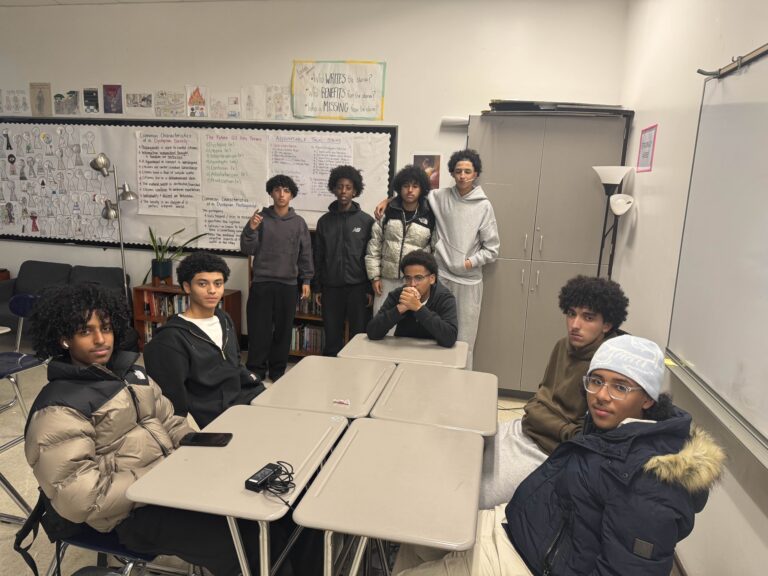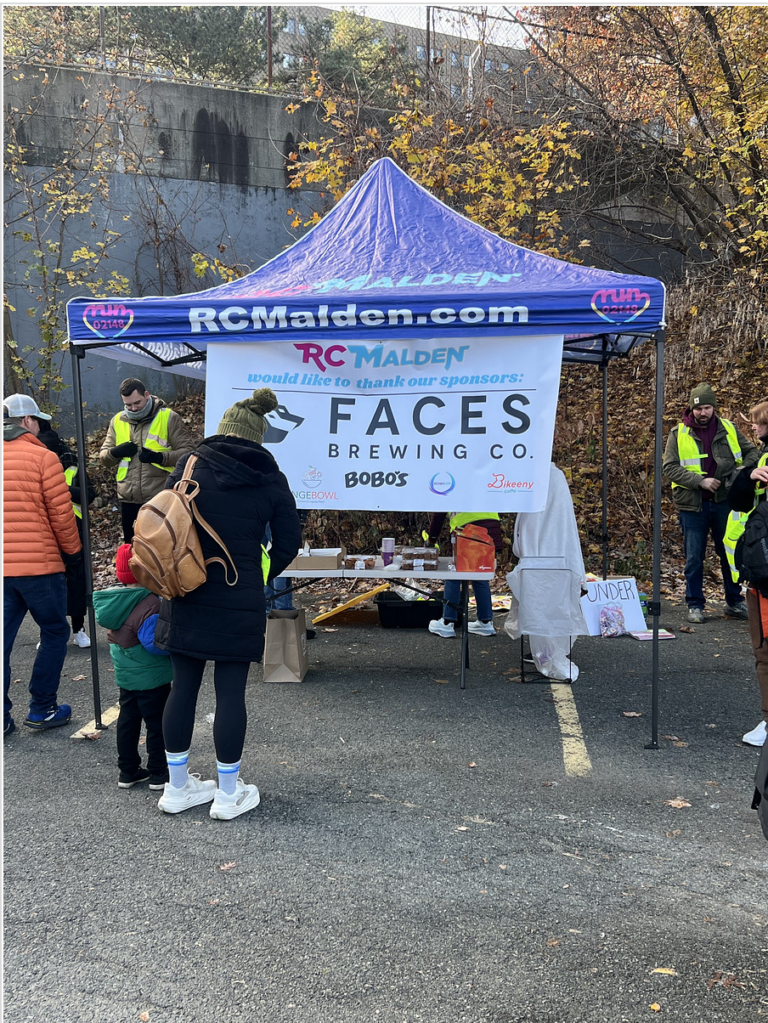
Abyan Ali and Aliana Lloyd also contributed to this article.
Each STEM elective provides a different and diverse learning experience for students with various interests. They all appeal to the various scientific endeavors students want to explore. Some may become forensic scientists solving cold cases, or they could become marine biologists who study ocean life and the consequences of rising sea levels. Each class overlaps many different skills from each letter in STEM—from physics and construction to statistics and experimentation—and the list continues.
The list of STEM electives at Malden High goes beyond just the ones mentioned in the article. The diverse number of STEM classes offered at several different levels brings about an endless world of possibilities to spark students’ creativity and inspire scientific thinking. Students, once taking even just one STEM course, may find themselves interested in content they had no idea they liked: every student should try out at least one elective course.
Students tend to use their time during high school to explore different courses to discover their passions and further explore what they already know they are interested in. Malden High provides a bountiful and diverse selection of course electives for various career paths, which is helpful and convenient for students as they have the opportunity to study various subjects and figure out their interests.
The high school also offers several departments, such as performing arts, business, and world languages. However, the science, technology, engineering, and mathematics (STEM) department in particular offers the most elective courses since it is a “very diverse subject area,” said the teacher leader of the science department, Shannon Votaw.
Some of the most popular STEM electives at Malden High include forensics, automotive, marine biology, and engineering. These classes are offered to students at the college prep and honors level, as well as intro, intermediate, and advanced, which students can pick between or be recommended for. In addition to this, the electives under the technology and automotive department include engineering classes and automotive classes. For these subjects, intro and advanced classes are offered.
Though the graduation requirements call for students to take at least three years of science courses, Votaw expressed that “it’s important to explore above the three graduation requirements.” She also encourages students to “just expose yourself to as many new concepts as possible,” which includes trying out for new electives.

One of the most popular STEM electives is Forensics. There is a Forensics 1 class and a Forensics 2 class, and both are semester classes. In these classes, students can gain scientific knowledge and learn techniques to investigate complex crime scenes. It is a valuable course that “looks at all different types of sciences…some of it is biology, some of it is chemistry, and some of it is physics,” forensics teacher Kristen Kirby explained.
Students can use these different aspects of various sciences to creatively apply them to solve several crime cases. Depending on which types of evidence students are given, they are “going to use different types of sciences and different skills to analyze it,” Kirby added.
“I really enjoy the class…we have done many fun activities that help us learn about certain aspects of forensics,” sophomore Angela Lam expressed.

Different cases and activities call for the use of different technologies. Students are taught how to dust for fingerprints and enhance their appearance to make them visible. There is also some “microscope work involved,” and they often look at “blood splatter and ballistics,” Kirby mentioned. A lot of their work requires math skills, such as measuring and data analysis.



Forensics investigates a wide variety of crimes, including real-world ones. The class resonates well with students obsessed with true crime or mystery. “I would definitely recommend this class… the labs are really interesting and fun, especially if you’re into crime…Ms. Kirby does a great job of handling the workload,” Junior Randy Nguyen remarked.

The Automotive courses are taught by Christopher Bazzinotti, who explained that the purpose of the electives is to “learn about maintenance on automobiles and equipment” and also “touch base on a lot of the scientific facts that go with an automobile.” Malden High offers an Automotive beginners class, an intermediate class, and an advanced class. All students start by taking the introduction class. Automobiles contain all sorts of electronics and hydraulic components, all things having to do with technology, and students can learn about how to maneuver an automobile by analyzing the technology and understanding how it works.

Bazzinotti noted that sometimes, they will “spin-off” topics and learn about other things that will help them understand the works of automotive mechanics better These include “learning about liquids and learning how to manipulate the boiling point of water, because when water boils at a certain temperature, we can use it to cool a car engine down,” added Bazzinotti.
The Automotive courses are some of the most valuable you could take because there are “little lessons along the way that are not just about automotive, but they’re about sciences that you know just every human should know a little bit about.” Further, by comprehending the inner workings of automobiles, students “should be able to save a lot of money over the course of their lives with a bit of knowledge about automobiles, cars, and the service industry,” Bazzinotti acknowledged.

Junior Patrick Coffill praised the class, calling it an essential learning experience. “I would recommend this class to everyone because it’s the best place to learn about basic mechanics,” he said. “You’re not just learning how to fix things; you’re also learning how things work.” This elective provides a valuable foundation for students interested in engineering, mechanics, or simply gaining essential life skills.
Junior Automotive student Keith Vien would describe the class as “very eventful and extremely hands-on. That’s why I can describe it as a really fun class. In the beginning, you learn the basics, like oil changes and tire rotations, and you learn parts about the engines.”
Vien went on to explain the change as students move up to harder automotive classes, such as intermediate and advanced: “Now that I’m intermediate, I work on more of the engine and how it works.” Vien also learned how to “put together an engine with stray parts and take a part of the engine and see the function of each part.”
The hands-on nature of this class not only keeps students engaged and having fun but also prepares students for real-life situations such as emergency car maintenance, even if you do not end up with an automotive career.

Marine Biology classes are taught by teacher Shauna Campbell. The class begins by teaching “oceanography and then how life evolved starting in the ocean, coming out onto land, and how land animals have similarities with marine animals,” said Campbell.

“We learn about ocean ecosystems, marine life, and the impact of human activities on the ocean,” elaborated senior Marine Biology student Taisha Balan. “We do a mix of lectures, labs, and projects. Sometimes, we examine marine specimens, watch documentaries, or conduct experiments related to marine organisms.”
The class focuses on and observes a multitude of sea creatures, from turtles to fish, and is very “hands-on,” said Campbell. Marine Biology lessons occasionally include dissecting animals, such as clams. The experience of dissecting is mainly “holding organisms and comparing them to each other, and trying to figure out what they are based on how they’re shaped,” Campbell summarized. The interactive activities and creative experiments make it more engaging than a typical science class and enjoyable for the students who participate.
“It’s interesting to learn about different marine species and how they interact with their environment,” said Balan, who expressed that she also “really enjoys the class.” She would “definitely recommend it to anyone interested in marine life or environmental science. It’s a fun and informative class, especially if you like hands-on learning and exploring how the ocean affects the planet.”
Campbell believes that the skills acquired in the class are “applicable to everyone’s life” because “every single thing that we do impacts the environment,” and knowing how your actions change the ecosystem can help you become more eco-friendly. She also simply thinks that “it’s interesting. it’s different,” which can be a source of amusement and curiosity for students testing the water with their interests.



Engineering is also a common STEM elective taken by students. Engineering classes are taught by teacher Ashley Freeman. Most of the time, building activities take place in the Nedlam Makerspace. The primary objective of the engineering courses at Malden High is to “make our world a better place and to solve problems that we’re facing,” stated Freeman. Freeman further expressed that her “main goal is for students to walk away with a sense of agency over their lives and over our world, to feel like they can come up with solutions to problems and they can use resources.” She wants them to be able “to help themselves,” along with helping others, and feel like they’ve made “an impact in making the work a better place.”

In class, students learn how to “use tools” and the engineering design process, such as wood cutting and 3D printing. Not only do they learn about design and construction, but also about equity and making the world a better place using technology through projects like “making wheelchair accessible desks,” Freeman added.
They use the iterative process to create prototypes and brainstorm ideas. Many students have already succeeded in making their designs for the school, including “a little free library” or even a miniature “ wind turbine,” which senior Damien Jacques did with his friend.

Sophomore Luiza Da Silva stated that engineering class “is pretty fast-paced” and “very hands-on because we’re starting something new every week.” She recommends the class to others who “are interested in being creative and making new things.” The class is also “not a workload-heavy class,” quoted senior Sunny Li. It has “a great deal of flexibility depending on your interests,” so engineering may be a good option if you do not want much homework or need flexibility.
The Engineering class also has a gardening club, where students “learn how to take care and grow healthy plants (both in soil and in hydroponic systems), as well as maintain the Malden Youth Garden,” Li summarized.




